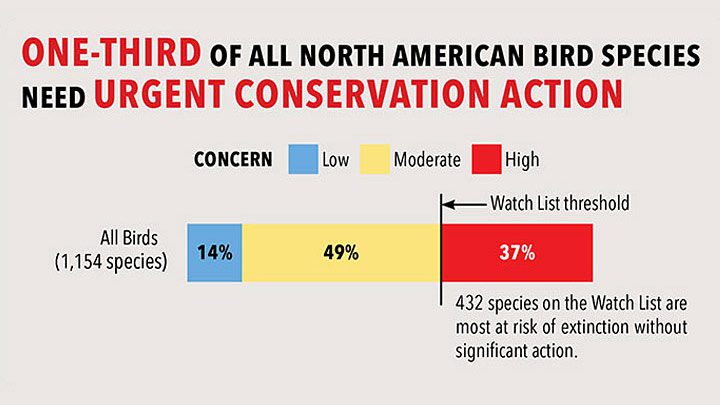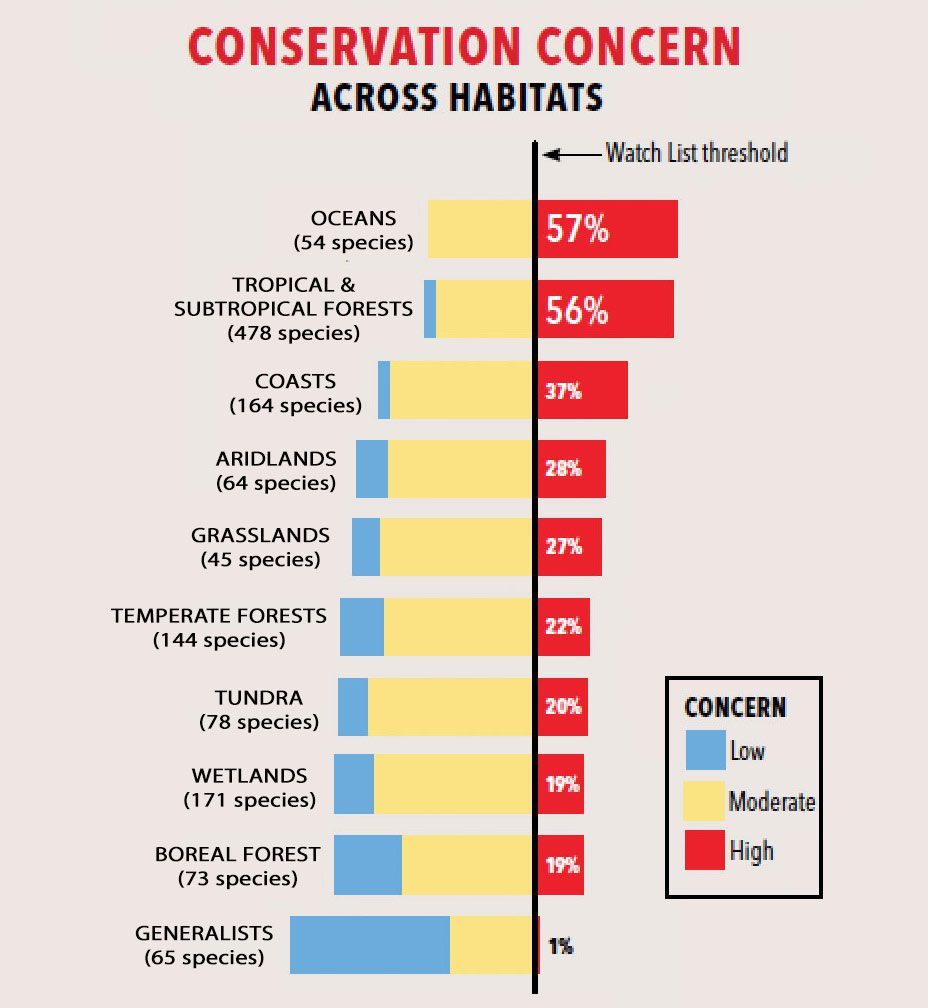Main Results
Birds in ocean and tropical forest habitats are of highest conservation concern.

But species need our help in every habitat.

Our Approach
This report is based on the first-ever conservation vulnerability assessment for all 1,154 native bird species that occur in Canada, the continental United States, and Mexico. The assessment was compiled by a team of experts from all three countries. The overall conservation status for each species takes into account its population trend, population size, extent of breeding and nonbreeding ranges, and severity of threats to populations. The Watch List identifies species of highest conservation concern based on high vulnerability scores across multiple factors. Year-round abundance maps from eBird data, in which intensity of color reflects seasonal abundance, are presented for selected species.

Habitat types fell into one of four levels of concern based on the percentage of species they contain that are on the Watch List:
In Crisis: Oceans and Tropical Forests
More than half of species from oceans and tropical forests are on the Watch List because of small and declining populations, small ranges, and severe threats to their habitats.
Steep Declines: Coasts, Aridlands, Grasslands
Many species in coastal, grassland, and aridland habitats are declining steeply. In particular, long-distance migratory shorebirds and species that migrate from the Great Plains to Mexico’s Chihuahuan grasslands have lost, on average, almost 70% of their continental populations since 1970.
Mixed Status: Temperate Forests, Tundra, Wetlands, Boreal Forest
Most species in these habitats are of moderate or low concern, yet roughly 20% are on the Watch List. Waterfowl have benefited from careful harvest management and wetland conservation, but positive waterfowl trends may not last if wetlands loss continues.
Faring Well: Generalists
The generalist group—birds that are adaptable and can live in multiple habitats—are of lowest conservation concern.
Additional resources:
- gallery of animated eBird maps for selected species
- details on the assessment methodology
- complete Species Assessment Database
